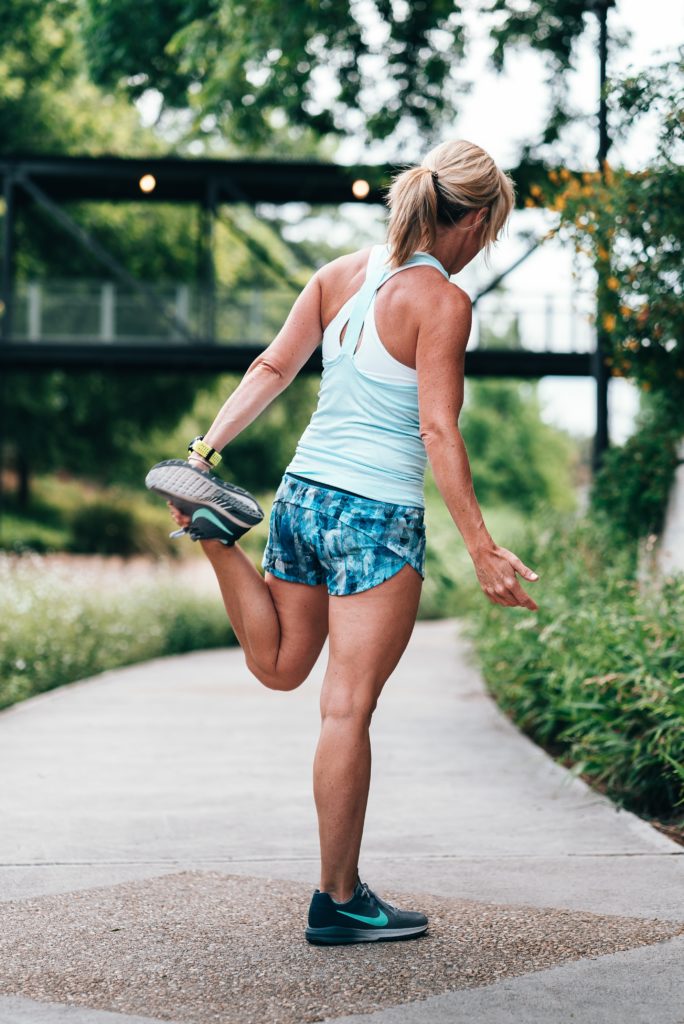Having worked with runners and cyclists for over a decade, I’ve been reminded time and time again: they’d rather run and ride or swim or do something other than strength training.
I totally understand why: we’d rather do the things we love, the things we’re good at, the things where we no longer need to think about the movement and the equipment. We love the tasks when we can simply go.
But as a movement coach who specializes in using strength training to make endurance athletes better, I have to A) convince these athletes to do SOME strength training, and B) use the most efficient, most effective exercises that will give direct results to address pain points, without taking away from their next race or training day performance.
That’s a tall order: select exercises that will give improvements fast, without decreasing performance in the primary sport.
Which brings us to the list, almost. First, a caveat or three.
1) Learning to perform these exercises well is absolutely essential. This is where coaching comes into play. A good exercise performed poorly won’t give the promised outcome (at best), or it may cause injury (at worst).
2) The poison is in the dose. Too much of something could cause injury or reduce performance. Too little won’t provide the desired benefit. Again, coaching is the key to the right dose-response.
3) This isn’t a diagnosis. If you’ve got pain that you can live with, and you can strength train without making it worse, it may be worth working towards strength. If the pain is strong, doesn’t subside, or gets worse with strength training. seek out a professional. Physical therapists are often the best place to start; they can provide a hands-on diagnosis, and can build a plan that includes treatment and a “worst-case scenario.” If they can’t help, they should be able to refer you to a high quality specialist to address your needs.
As promised: here’s my top-10 strength exercises for endurance athletes.
10) Sandbag clean and press: The sandbag is challenging to grip, so it feels heavier than it is. It’s a full-body exercise, so the clean and press requires everything to get involved; if you go slow, it’ll make you strong, and if you go fast, it’ll get you out of breath.
9) Bottoms-up kettlebell press: We all need stable shoulders, but if your sport is all legs, you’ll have to apply some load to the upper body to keep the shoulders healthy. Enter the bottoms-up press: grip and shoulder stabilizers get challenged, along with your arms and the big muscles of your back.
8) Zane rows: A strong back supports your torso when you’re running, reducing the load on your low back. The Zane row is easy to learn, and brutally effective for your lats and internal obliques.
7) Hardstyle kettlebell swings: The hardstyle swing, as taught by StrongFirst, requires explosive power, and strong glutes and hamstrings. If you do a few, they’ll make you strong. If you do a lot, they’ll help with your endurance conditioning.
6) Goblet squats: The goblet squat is the simplest squat variation to learn, and you can always find a dumbbell or a kettlebell to use. They’ll strengthen your hips and your back, while helping with ankle flexibility. The best of all worlds.
5) Founder Lunges: These look easy, and they are, unless you do them right. This should be a challenging isometric (“without movement”) that leaves you shaking and maybe sweating. They’ll show you where you’re strong (and where you’re weak), and will help you fill the gaps.
4) Rear lunges: Lunges are almost cliche for runners, but when we take them backwards they become more knee-friendly, and by adding load, we can challenge our stability. Do long sets of 15-20, and enjoy the burn.
3) Calf raises: So simple, but your knees and feet will thank you. Calves don’t just push off the ground, they also stabilize the joints above and below them. Add some serious load (half of bodyweight) to prove you’re a badass.
2) Dumbbell Romanian deadlifts: Like the calves, the hamstrings are an oft-overlooked muscle for runners and cyclists (who are often quad-dominant). But the hammies also support the knees, and if they don’t work well, or if they don’t have much endurance, your knees will likely bear the brunt of your bodyweight hitting the ground.
1) External oblique opener: It all starts at your hips, your pelvis, your abs. The external oblique opener (which could be called an “engagement exercise”) will build your connection to your low abs, so they’re ready to support your legs on your run or ride. Back pain? Incontinence? Pelvic floor issues? The external oblique opener is the single greatest tool in the shed for dealing with issues between the navel and the knees.

